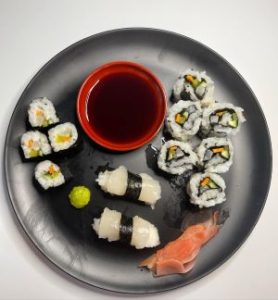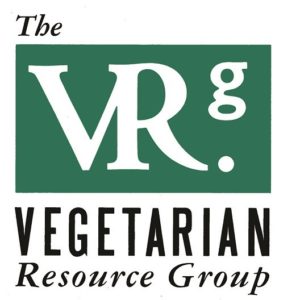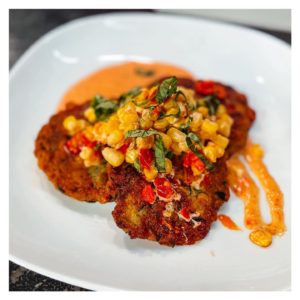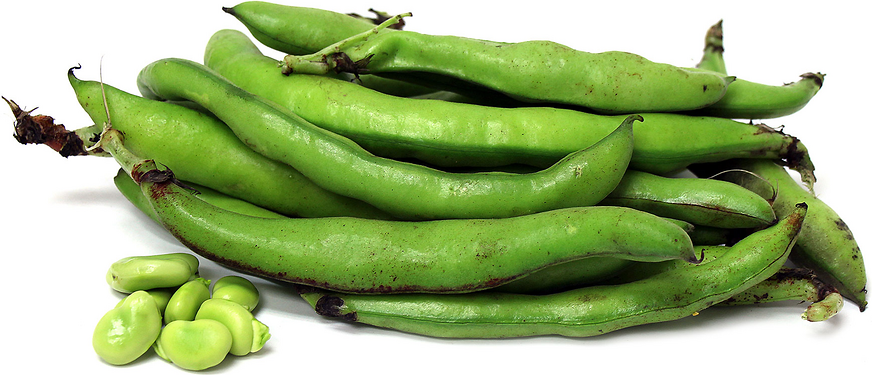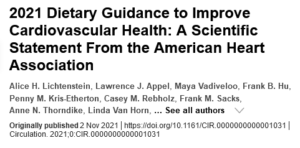Posted on
July 29, 2022 by
The VRG Blog Editor
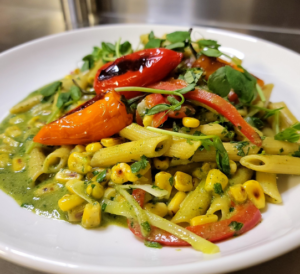
Photo from Belse Restaurant Bar & Brewery (@belsenyc)
The Vegetarian Resource Group maintains an online Guide to Vegan/Vegetarian Restaurants in the USA and Canada. Here are some recent vegan restaurant additions. The entire guide can be found here: http://www.vrg.org/restaurant/index.php
To support the updating of this online restaurant guide, please donate at: www.vrg.org/donate
Here are some new additions to VRG’s guide (Note: Due to the COVID-19 pandemic many are doing take-out and/or delivery now):
Belse, 265 Bowery, New York, NY 10002
Belse’s high-end, culture-agnostic approach leads to options ranging from the beet carpaccio with almond ricotta to a selection of pizzas and flatbreads including mushroom pesto to the Aubergine filet, an eggplant steak in a mushroom au jus. The brunch menu offers a mix of savory items as well as breakfast dishes such as banana pancakes or lemon poppy seed waffles with a maple rum syrup. In line with Belse’s tagline (“The best vegan food tastes even better when you drink responsibly”), the full-service bar and on-site brewery offer a range of beverages to pair with your meal. This includes the 4 signature wines from the Belse winery in Healdsburg, California, and the freshly made brews from the only 3-vessel German brewhouse in Manhattan. Brunch cocktails include the Upside-Down Cake made with vanilla vodka and lemon and pineapple juices and the Black & White Espresso Martini. If you are not already blown away by the thoughtfulness and creativity of Belse, consider this: the restaurant’s logo (hands holding the earth wrapped in a lotus flower) was designed by Shepard Fairey, the street artist who created the “Hope” portrait of Barack Obama.
Chelsea Cashew Creamery, 719 Broadway, Dunedin, FL 34698
Chelsea Cashew Creamery is a mother & son business in the Tampa Bay area that makes all its ice cream in-house with natural ingredients and no stabilizers or additives. The menu includes flavors such Chelsea’s choice, chocolate walnut, coconut, Dutch chocolate, masala chai, mint chip, pistachio, mocha, and many more amazing flavors.
Folke, 2585 W. Broadway, Vancouver, BC V6K 2E9 Canada
Kitsilano-based restaurant with ever-changing menu based around vegetables from local farms and alcohol from local breweries and wineries. Order a few small plates to share, or a 6-course tasting menu. Offerings include expertly selected, paired and prepared vegetable dishes such as beets with rose, hazelnut and rhubarb; dumplings with mushroom xo, gai lan, and ponzu; or a dessert consisting of rhubarb, fennel and chamomile. Guests can sit at tables amidst the classy indoor décor, at a bar overlooking the open kitchen, or on the covered patio outdoors. Chefs often interact with guests to speak about the dishes and the local farms the ingredients came from, and guests can also come to the daily “patio hang” at 3-5pm with beer, wine, and snacks. Menu prices include gratuity in an effort to pay the front-of-house staff a fair wage.
House of Mexica, 3600 Warren Way #107, Reno, NV 89509
Showcasing the roots of the Mexica (Meh-Shee-Ca) tribe, House of Mexica will undoubtedly catch your attention if not through their authentic Mexican cuisine, then through their bold, eye-catching bright purple logo. This vegan restaurant gives you complete mobility of your experience from their loads of soy and gluten-free options, 5 different “meat” options (Asada, Al Pastor, Chick’n, Nohpalli (prickly pear cactus), Hibiscus), and loads of house toppings to customize your dish. They have dedicated a section of the menu entirely to Mexican classics such as Tacos, Sopes, Tortas, Burritos, and Chimichangas. Additionally, their 12 different Chick’n Sandwiches, Burgers, and Bowls make it impossible for you to not find something you love. Another popular section are their fries as you can choose between the Mexican, Buffalo, Asada, Animal Kingdom, or Mac ‘n’ cheese options. Lastly, they have a selection of “smoothie gods” as you can choose between their water, solar, fire, or earth smoothies, or Mexican classics like Horchata and Jamaica.
Laughing V, 184 Duane St., New York, NY 10013
Tiny spot in Tribeca, a few blocks from the World Trade Center. Partnered with the Laughing Man Café next door, part-owned by actor Hugh Jackman. Serves both drinks (including coffee — or check out the caffeine-free pink “matcha” with powdered dragon fruit) and sandwiches and baked goods, as well as a small collection of vegan market items (cashew cheese, vegan pudding mix etc.). The food is mostly made from scratch out of unprocessed ingredients (including the bread for the sandwiches): try the Philly Cheesesteak, featuring seitan handmade from lentils and Italian herbs. Seating available at the benches and small park right outside.
Nomoo, 7507 Melrose Ave., Los Angeles, CA 90046
Nomoo serves soy-free, non-GMO burgers, shakes, Everything Vegan BBQ facon, hot chick’n, fried oyster, Beyond patty, fried onion strings, and more. Nomoo has both indoor and outdoor seating, as well as soothing music and a prime location for people-watching.
Rock n Roots, 469 Willis Ave., Williston Park, NY 11596
Enjoy a granola cup, sushi rolls, wraps and salads, panini sandwiches, burgers, and desserts.
Seaside Eatery, 98275 Overseas Hwy., Key Largo, FL 33037
Seaside Eatery is a food truck eatery with outdoor seating. Serving the freshest ingredients to bring you delicious hand-crafted dishes such as the Stack ‘o Cakes, Avocado Toast, Lyndsay’s Bahn Mi, Roasted Vedge, Falafel, Chickpea salad, Hummus, and other dishes. They also offer Boba teas.
Sookie’s Veggie Burgers, 502 State St., Madison, WI 53703
Besides burgers, other items on the menu include spinach chicken pesto sandwich, chicken sandwich, black bean chipotle burger, and fries. They also have desserts produced locally.

